Abstract
A prospective methodology was used to assess the neurobehavioral effects of fetal and postnatal lead exposure during the first 2 years of life. Lead was measured in whole blood prenatally in mothers and at quarterly intervals in the infant. Prenatal blood lead levels were low (mean = 8.0 micrograms/dL). However, approximately 25% of the study infants had at least one serial blood lead level of 25 micrograms/dL or higher during the second year of life. Multiple regression and structural equation analyses revealed statistically significant relationships between prenatal and neonatal blood lead level and 3- and 6-month Bayley Mental and/or Psychomotor Development Index. However, by 2 years of age, no statistically significant effects of prenatal or postnatal lead exposure on neurobehavioral development could be detected. Data consistent with the hypothesis that a postnatal neurobehavioral growth catch-up occurred in infants exposed fetally to higher levels of lead are presented.
Full text
PDF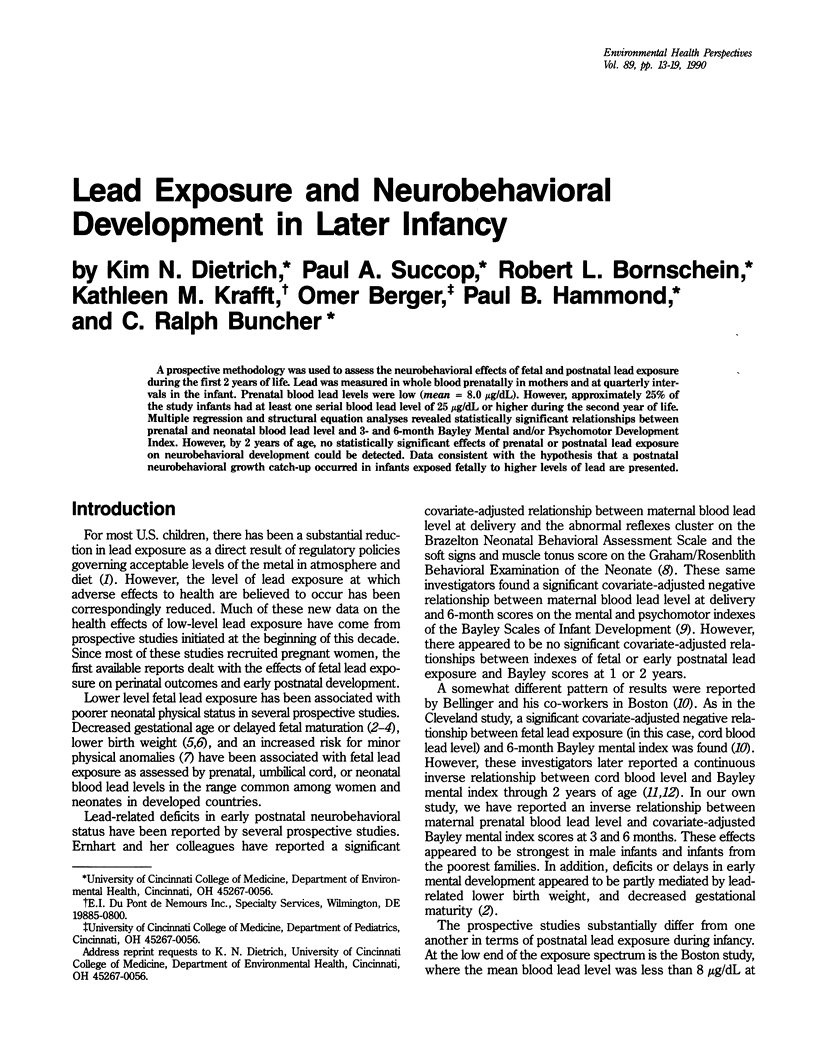
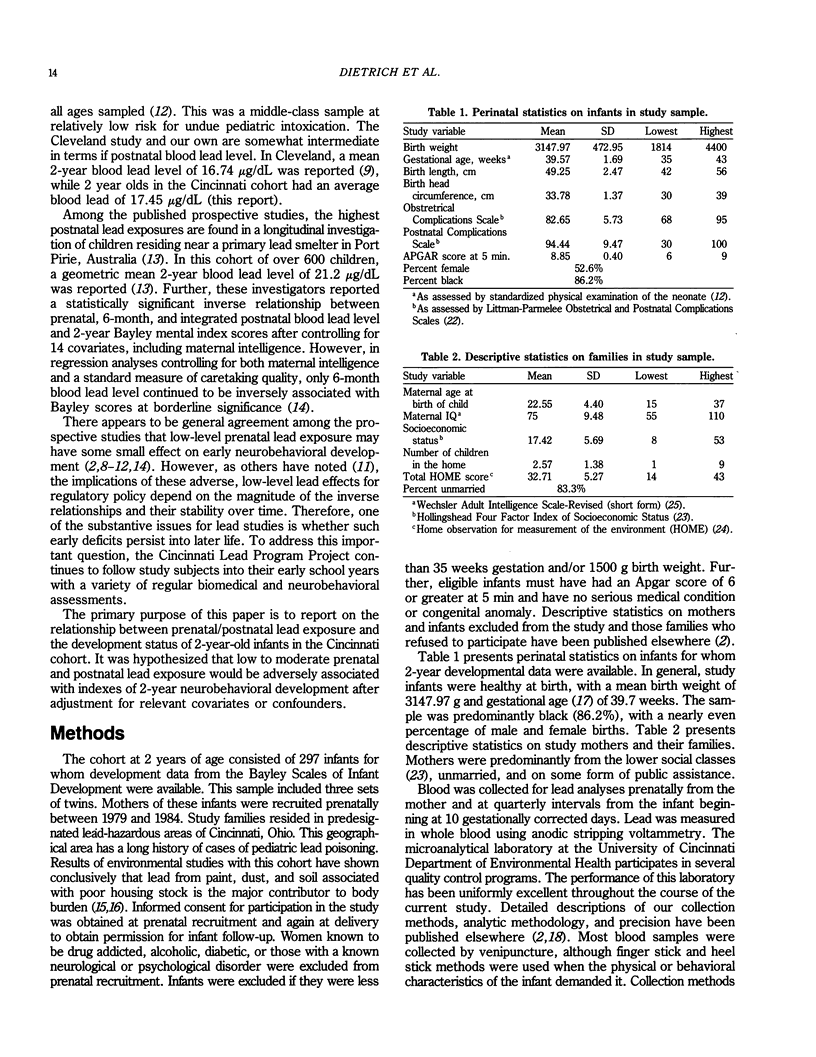
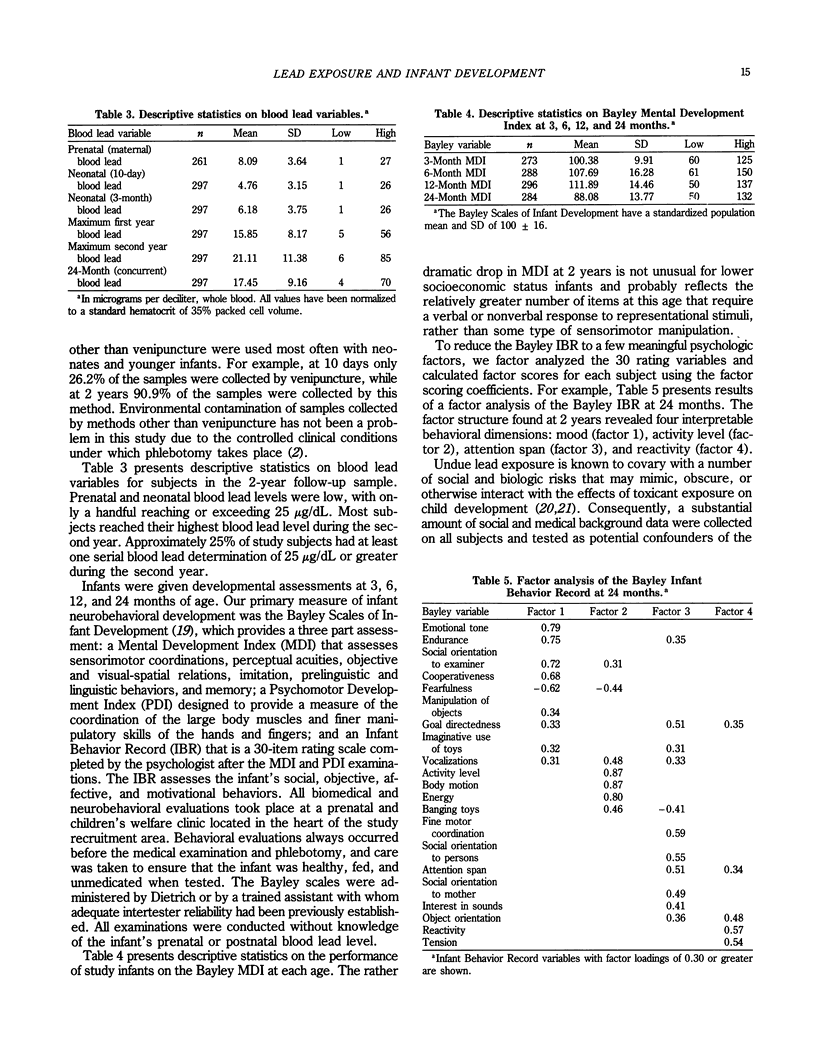
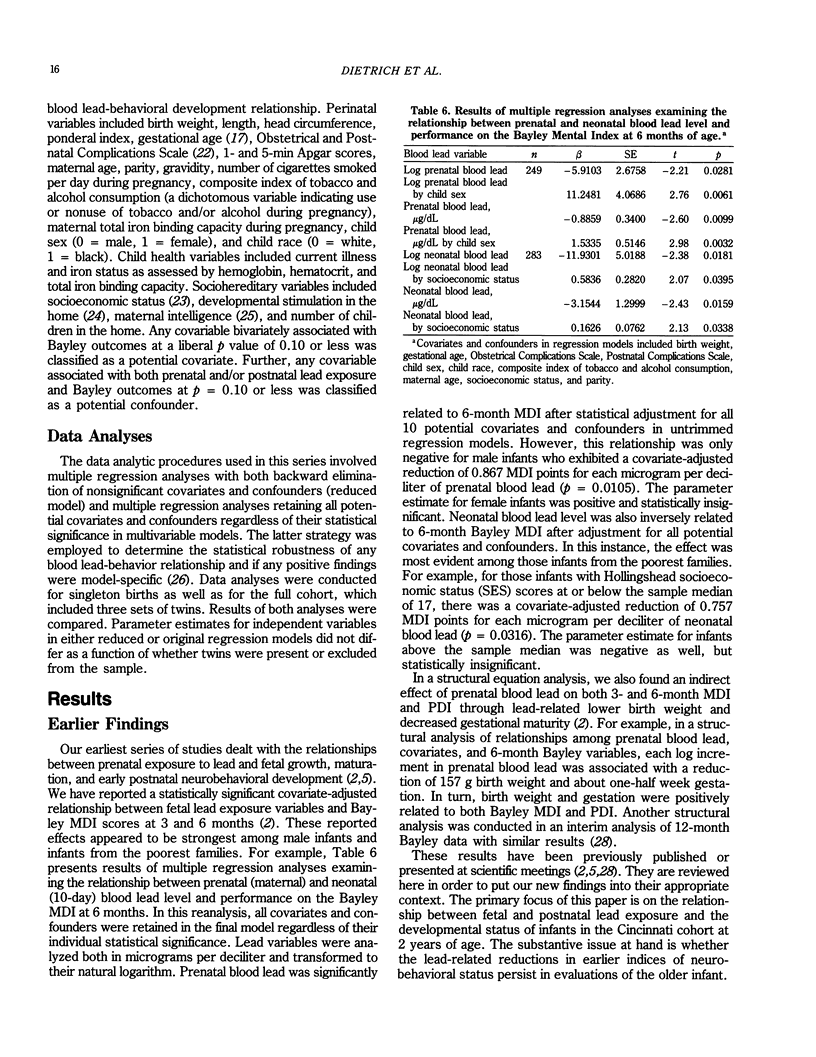
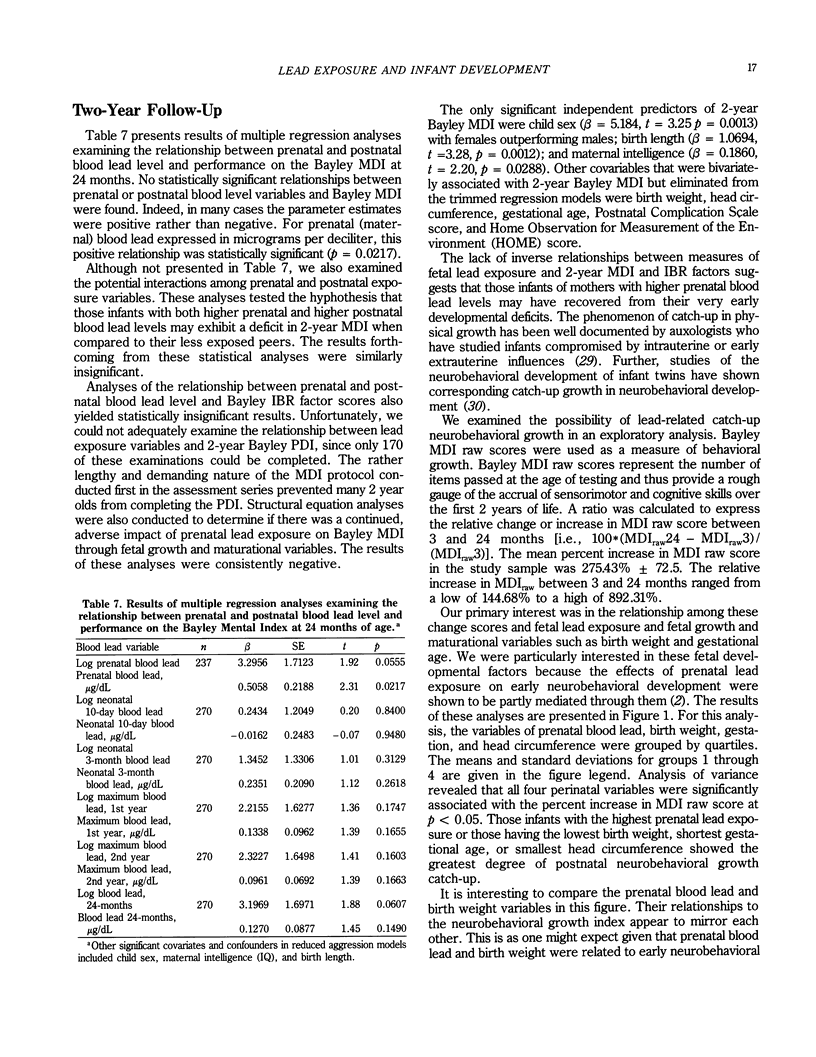
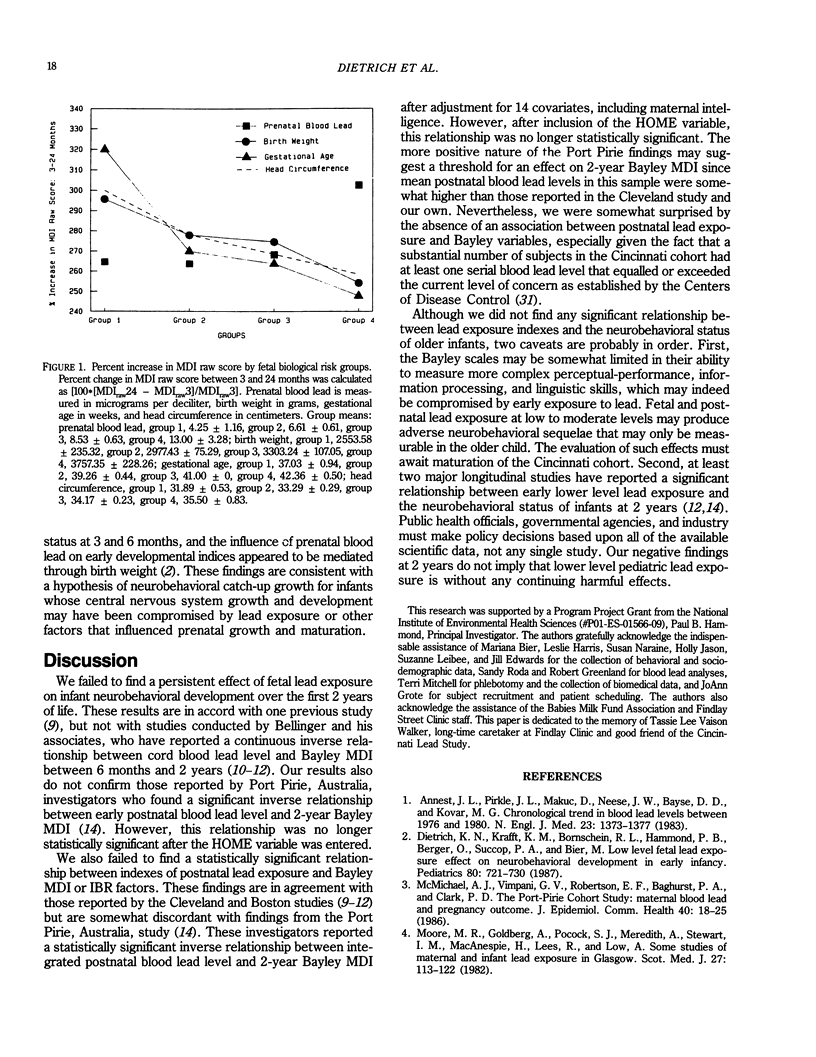
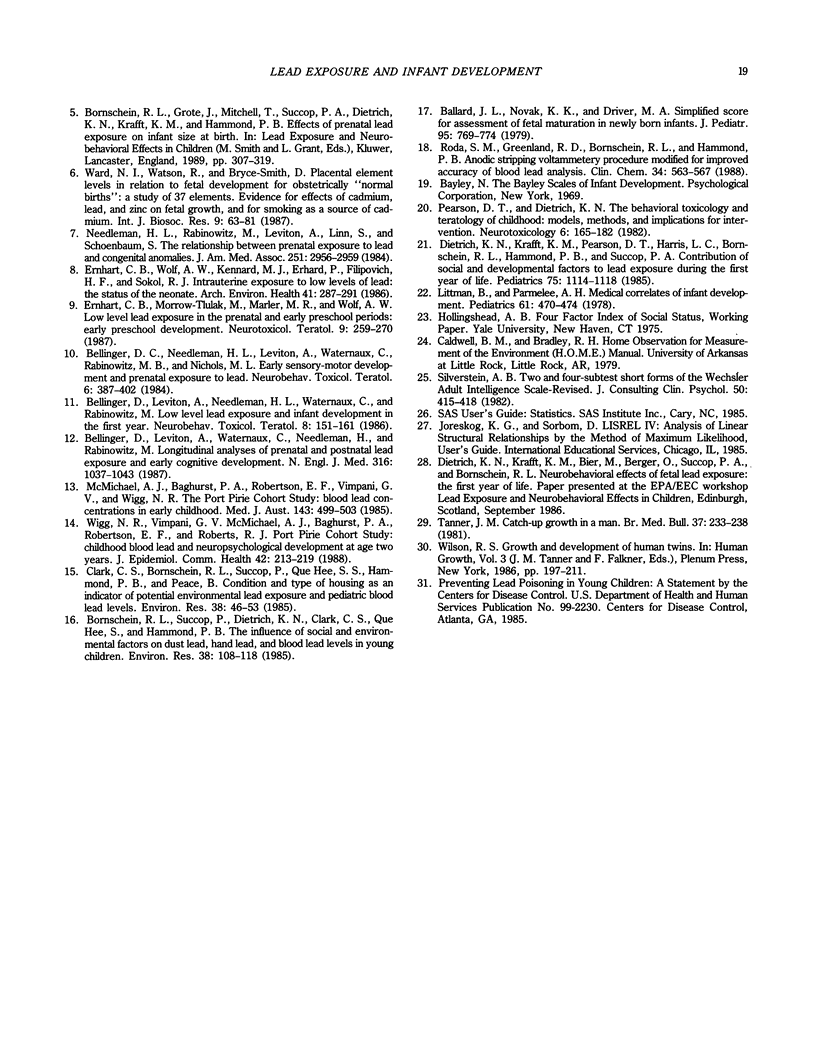
Selected References
These references are in PubMed. This may not be the complete list of references from this article.
- Ballard J. L., Novak K. K., Driver M. A simplified score for assessment of fetal maturation of newly born infants. J Pediatr. 1979 Nov;95(5 Pt 1):769–774. doi: 10.1016/s0022-3476(79)80734-9. [DOI] [PubMed] [Google Scholar]
- Bellinger D. C., Needleman H. L., Leviton A., Waternaux C., Rabinowitz M. B., Nichols M. L. Early sensory-motor development and prenatal exposure to lead. Neurobehav Toxicol Teratol. 1984 Sep-Oct;6(5):387–402. [PubMed] [Google Scholar]
- Bellinger D., Leviton A., Needleman H. L., Waternaux C., Rabinowitz M. Low-level lead exposure and infant development in the first year. Neurobehav Toxicol Teratol. 1986 Mar-Apr;8(2):151–161. [PubMed] [Google Scholar]
- Bellinger D., Leviton A., Waternaux C., Needleman H., Rabinowitz M. Longitudinal analyses of prenatal and postnatal lead exposure and early cognitive development. N Engl J Med. 1987 Apr 23;316(17):1037–1043. doi: 10.1056/NEJM198704233161701. [DOI] [PubMed] [Google Scholar]
- Bornschein R. L., Succop P., Dietrich K. N., Clark C. S., Que Hee S., Hammond P. B. The influence of social and environmental factors on dust lead, hand lead, and blood lead levels in young children. Environ Res. 1985 Oct;38(1):108–118. doi: 10.1016/0013-9351(85)90076-3. [DOI] [PubMed] [Google Scholar]
- Clark C. S., Bornschein R. L., Succop P., Que Hee S. S., Hammond P. B., Peace B. Condition and type of housing as an indicator of potential environmental lead exposure and pediatric blood lead levels. Environ Res. 1985 Oct;38(1):46–53. doi: 10.1016/0013-9351(85)90071-4. [DOI] [PubMed] [Google Scholar]
- Dietrich K. N., Krafft K. M., Bornschein R. L., Hammond P. B., Berger O., Succop P. A., Bier M. Low-level fetal lead exposure effect on neurobehavioral development in early infancy. Pediatrics. 1987 Nov;80(5):721–730. [PubMed] [Google Scholar]
- Dietrich K. N., Krafft K. M., Pearson D. T., Harris L. C., Bornschein R. L., Hammond P. B., Succop P. A. Contribution of social and developmental factors to lead exposure during the first year of life. Pediatrics. 1985 Jun;75(6):1114–1119. [PubMed] [Google Scholar]
- Ernhart C. B., Morrow-Tlucak M., Marler M. R., Wolf A. W. Low level lead exposure in the prenatal and early preschool periods: early preschool development. Neurotoxicol Teratol. 1987 May-Jun;9(3):259–270. doi: 10.1016/0892-0362(87)90011-0. [DOI] [PubMed] [Google Scholar]
- Ernhart C. B., Wolf A. W., Kennard M. J., Erhard P., Filipovich H. F., Sokol R. J. Intrauterine exposure to low levels of lead: the status of the neonate. Arch Environ Health. 1986 Sep-Oct;41(5):287–291. doi: 10.1080/00039896.1986.9936698. [DOI] [PubMed] [Google Scholar]
- Littman B., Parmelee A. H., Jr Medical correlates of infant development. Pediatrics. 1978 Mar;61(3):470–474. doi: 10.1542/peds.61.3.470. [DOI] [PubMed] [Google Scholar]
- McMichael A. J., Baghurst P. A., Robertson E. F., Vimpani G. V., Wigg N. R. The Port Pirie cohort study. Blood lead concentrations in early childhood. Med J Aust. 1985 Nov 25;143(11):499–503. [PubMed] [Google Scholar]
- McMichael A. J., Vimpani G. V., Robertson E. F., Baghurst P. A., Clark P. D. The Port Pirie cohort study: maternal blood lead and pregnancy outcome. J Epidemiol Community Health. 1986 Mar;40(1):18–25. doi: 10.1136/jech.40.1.18. [DOI] [PMC free article] [PubMed] [Google Scholar]
- Moore M. R., Goldberg A., Pocock S. J., Meredith A., Stewart I. M., MacAnespie H., Lees R., Low A. Some studies of maternal and infant lead exposure in Glasgow. Scott Med J. 1982 Apr;27(2):113–122. doi: 10.1177/003693308202700203. [DOI] [PubMed] [Google Scholar]
- Needleman H. L., Rabinowitz M., Leviton A., Linn S., Schoenbaum S. The relationship between prenatal exposure to lead and congenital anomalies. JAMA. 1984 Jun 8;251(22):2956–2959. [PubMed] [Google Scholar]
- Pearson D. T., Dietrich K. N. The behavioral toxicology and teratology of childhood: models, methods, and implications for intervention. Neurotoxicology. 1985 Fall;6(3):165–181. [PubMed] [Google Scholar]
- Roda S. M., Greenland R. D., Bornschein R. L., Hammond P. B. Anodic stripping voltammetry procedure modified for improved accuracy of blood lead analysis. Clin Chem. 1988 Mar;34(3):563–567. [PubMed] [Google Scholar]
- Tanner J. M. Catch-up growth in man. Br Med Bull. 1981 Sep;37(3):233–238. doi: 10.1093/oxfordjournals.bmb.a071708. [DOI] [PubMed] [Google Scholar]
- Wigg N. R., Vimpani G. V., McMichael A. J., Baghurst P. A., Robertson E. F., Roberts R. J. Port Pirie Cohort study: childhood blood lead and neuropsychological development at age two years. J Epidemiol Community Health. 1988 Sep;42(3):213–219. doi: 10.1136/jech.42.3.213. [DOI] [PMC free article] [PubMed] [Google Scholar]


